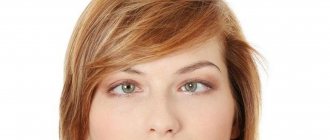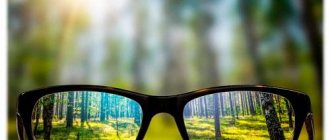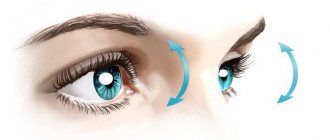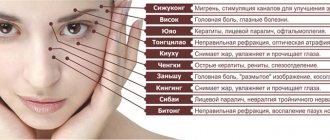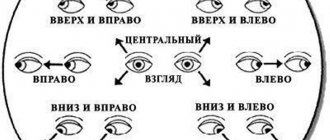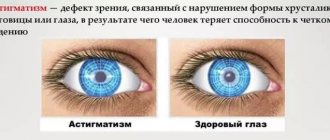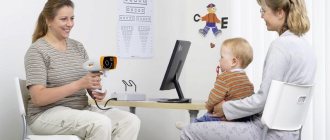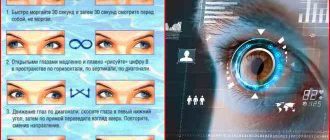Glaucoma is one of the most serious eye diseases. The fight against it involves not only drug treatment, but mandatory adherence to certain rules of everyday life.
If you have glaucoma, you should try to do only intellectual work or light physical labor. It is better to exclude other loads. You must refuse:
- from working in an inclined position or with your head down.
- from working in the garden and in the garden.
- Avoid stress if possible.
It is useful for people with glaucoma to do eye exercises, take walks and spend more time in the fresh air. You can engage in physical education, and sports are not excluded (in particular, swimming, cross-country skiing).
Of course, every person has a lot of household chores that simply need to be done daily or periodically. However, if you have glaucoma, you may want to avoid hand washing, mopping, lifting heavy objects, and chopping wood. In addition, it is not recommended to play wind instruments. After all, all this contributes to a rush of blood to the head, as a result, intraocular pressure increases. It is for this reason that you should also avoid standing near the stove, sitting in a bathhouse, or spending a long time in the sun. For sunbathers, you should consider visiting the beach in the evening.
The effectiveness of eye exercises for glaucoma
Gymnastics is used as an additional method of therapy. The health event promotes rapid relief from increased intraocular pressure, improves microcirculation and muscle tone of the visual analyzer.
Special exercises are performed at the workplace, at home and in any convenient place if discomfort or asthenopia occurs. There is no need to buy additional equipment; a pencil or pen will always be at hand.
It is contraindicated to make sudden movements of the head or eyes. Do the exercises strictly according to the instructions, based on your own feelings.
The effectiveness of gymnastics:
- relieving symptoms of asthenopia;
- prevention of glaucoma;
- preventing the development of the disease;
- strengthening the functioning of the optic nerve;
- improvement of visual perception;
- increasing the stability of the eye.
Gymnastics should be carried out according to a complex agreed upon with the ophthalmologist. Simultaneously with exercise, use medications and maintain proper nutrition. These methods of therapy cannot be neglected. Eye exercises alone will not help prevent the development of pathology; an integrated approach to treatment is important.
Do gymnastics and massage help in therapy?
Gymnastics and massage for glaucoma are auxiliary methods of therapy. Let's consider what effect can be achieved as a result of their use.
Improved blood circulation
Light massage movements promote blood flow at the site of treatment. Thanks to regular procedures, blood circulation improves, as a result of which the components of the visual apparatus begin to actively function - they remove excess fluid from the eyes.
Palming
Complex relaxation is an effective way to prevent pathologies in the operation of the optical system. Palming has the same principle of restoring the visual analyzer as the sleep state. Only the patient can control the process and is conscious.
Technique:
- Cover your eyes with your palms. Completely isolate from light.
- Imagine any black objects in front of you until the light completely disappears.
- This approach helps to relax the overexcited endings of the optic nerve and relaxation of the visual analyzer.
If floaters appear before the eyes, it means that the eyes are very tense and the visual endings are overexcited. In complete darkness, dynamic electrical discharges are replaced by alpha waves.
The exercise is performed for 15–30 seconds. Then the time increases to 1 minute. The longer you give your eyes rest, the better.
What physical exercises and sports are not contraindicated for glaucoma?
If the patient has been diagnosed with glaucoma, you should be prepared for the fact that heavy types of physical activity will be absolutely contraindicated. The patient needs to exclude activities related to bending:
- washing floors;
- handwash;
- gardening work, etc.;
Spending a long time with your head down is dangerous; it contributes to a sharp increase in intraocular pressure and, as a result of a severe attack of headache, complete blindness can occur. When tilted, the eye lens moves downward, and poor circulation causes an attack.
Other activities that require a head tilt can be performed using a low stool in a sitting position.
Tibetan gymnastics for the eyes
Regular implementation of the technique allows you to eliminate most disorders of visual perception of the spasmodic and organic type. The organs of vision will shine with health and be filled with energy.
Set of exercises:
- Place your index fingers at a distance of 40 cm. Gradually spread your arms, watching them with your peripheral vision.
- Rub your eyebrows for 2 minutes. Move from the middle of the forehead to the temporal region.
- Lightly tap with your fingertips for 3 minutes. Massage your temples.
- Perform circular movements.
- Close your eyes, lightly press on your eyeballs 6 times. Open, look into the distance, counting to 6. Do 3 repetitions.
- Rapid blinking for 2 minutes. Do not squint, open and close your eyes quickly.
- Close your eyes and open wide. Do not blink for 6 seconds, repeat the lesson.
- The exercise is completed by stroking the eyelids from the inner corners to the outer ones, then along the lower eyelids in the opposite direction.
Relaxation of facial muscles
You can relax the visual system not only through visual gymnastics, but also by performing exercises with the facial muscles. Daily measured exercise will strengthen the eye muscles and the entire visual system as a whole.
Exercises to relax the facial and eye muscles:
- Massaging the jaw, yawning.
- Work with shoulders and head (performing circular movements).
- Focusing your gaze on the tip of your nose (do not blink), closing and relaxing your eyes.
- Raising your gaze and holding it in this position for as long as possible, then closing and relaxing your eyes.
- Keep your gaze on your shoulder without turning your head. Closing your eyes and repeating the exercise with the other shoulder.
- Focusing the gaze on distant and near objects for 10 seconds.
- Drawing large symbols on the wall with your eyes without moving your head.
- Focusing your gaze on a pencil that gradually approaches your nose.
- Rub your palms and cover your closed eyelids so that the light penetrates through your fingers. You need to imagine the color black and concentrate on it.
While performing the exercises, you need to breathe calmly and evenly, and avoid severe visual discomfort and excessive pressure on the eyeballs. Each exercise must be repeated 10 times, the entire complex should take more than 3 minutes.
When performing exercises, it is important to monitor your well-being. Do not overload your eyesight or be too zealous. Excessive loads do not enhance the beneficial effect, but only aggravate glaucoma.
The doctor should select the exercises. Visual exercises for glaucoma help prevent vision deterioration and even blindness. The greatest effect is brought by gymnastics, which is carried out from a young age, but older patients can also influence their vision by performing simple exercises.
Exercises according to Neumyvakin
Doctor of Medical Sciences Neumyvakin I.P. believes that the problem can be solved by cleansing the body and special exercises. Offers the following set of exercises to stabilize IOP:
- Wash your face with cool water and lightly massage your eyelids. Palming and completely relax.
- Look up and fixate for 5 seconds. Relax and slowly look down until your eyes completely roll back.
- Do the same, just look left and right. Try to look behind you without turning your head.
- The technology doesn't change. The head is motionless, only the organs of vision are included in the work. It is necessary to alternately direct the apples to different corners. Drive diagonally.
- Bring the organs to the nose and relax. If discomfort occurs, stop the exercise.
- Blind Man's Bluff. Relax the oculomotor muscles by closing your eyes. Open after 5 seconds.
Neumyvakin recommends doing an exercise with glass for glaucoma. Draw a point and find the object behind the glass. First concentrate on the mark, then turn your gaze to a distant object.
Forms of the disease
Source: Linza.Guru Open-angle glaucoma accounts for more than 90% of cases of this disease.
With open-angle glaucoma, access to the natural drainage system of the eye is open, but its functions are impaired. Result
Gradual increase in intraocular pressure. As a rule, open-angle glaucoma is characterized by an asymptomatic, almost imperceptible course of the disease.
Since the field of vision narrows gradually, a person sometimes quite by accident discovers that he has vision in only one eye. In some cases, there are complaints about the periodic appearance of rainbow circles when looking at a light source, blurred vision.
In angle-closure glaucoma, intraocular fluid accumulates due to the fact that there is no access to the natural drainage system of the eye: the iris blocks the angle of the anterior chamber. As a result, the pressure increases, which can lead to an acute attack of glaucoma.
Stages of development
Depending on the characteristics of the condition of the optic nerve head, as well as the degree of narrowing of the visual field, four stages of glaucoma development are distinguished:
- First
initial stage - characterized by the appearance of a blind spot that interferes with vision with normal peripheral vision, there is a deepening of the optic nerve head in the central zone.
- Second
Developed stage - characterized by a persistent narrowing of the field of vision on the inner (nasal) side; upon examination, a deepening of the optic nerve head is noted at the edges.
- Third
An advanced stage is characterized by a narrowing of the visual field from different sides or the preservation of only some of its parts; a pronounced marginal depression of the optic nerve head is observed.
- Fourth
Terminal stage - characterized by either loss of objective vision with preservation of light perception, or complete loss of vision, blindness.
Exercises according to Norbekov
Thanks to this technique, thousands of people have forgotten about glasses. For glaucoma, exercise helps restore vision. Norbekov's technique is based on self-hypnosis. Gymnastics for the eyes gives excellent results.
You should not expect a cure for glaucoma, although Norbekov is trying to prove the effectiveness of the technique even with such irreversible damage to the optic nerve, which glaucoma leads to.
Norbekov complex:
- Do a warm-up. Rotate your eyes, mentally draw lines up/down/left/right.
- Draw a butterfly with eyes. Make movements in the following order: left down - right up - right down - left up. Repeat the exercise in the opposite direction. Finish by blinking rapidly for 30 seconds.
- Mentally draw a figure eight, including only the eyeballs in the work. Make the circles as large as possible, go beyond your own comfort, but do not exercise through pain. Do not go beyond the face. Overvoltage must not be allowed.
- Look at the tip of your nose. Shift your gaze in front of you, fixating on the side objects, but do not move them.
Rules of eye gymnastics
The goal of treating glaucoma with exercise is to improve blood circulation. Due to this, the outflow of intraocular fluid is stimulated and the muscles are strengthened. Charging should be carried out following the general rules:
- before the main set of exercises, blink intensely or close your eyes tightly;
- pay attention to all eye muscles;
- The main exercises for glaucoma are blinking, looking away, rotation.
After this, you should completely relax. The massage is carried out before and after the procedure, with light stroking movements.
Tibetan gymnastics
In the treatment of glaucoma, oriental methods of eye gymnastics are widely used. Tibetan specialists pay great attention to the environment around a person and their psychological mood.
It is recommended to do gymnastics in a secluded place so that nothing interferes with concentrating on the exercises.
- Concentrate your gaze on the two fingers of your hand extended in front of you. Then spread your fingers, trying to keep your gaze in the same place. The exercise trains the rectus muscles.
- Extend your hand in front of you, focus on one finger. Slowly bring it closer to your eyes, then quickly look at the object outside the window. The exercise trains accommodation.
- Keep your head straight, eyes as far to the side as possible. Hold them like this for several seconds. The exercise develops the oblique muscles.
- To train the entire muscular system, you should draw various shapes with your eyes.
After completing the gymnastics, it is recommended to do a light massage of the eyes and eyebrows; for glaucoma, it stimulates the release of accumulated fluid.
To view Tibetan eye gymnastics:
According to Neumyvakin
Professor Neumyvakin attaches great importance to eye exercises performed for glaucoma. He developed a whole set of exercises, including several stages.
Initially, you should relax the eye muscles as much as possible. The professor recommends immersing your face in cool water, then lightly massaging your closed eyelids. After this, you need to take a comfortable position and relax.
Gymnastics for glaucoma consists of the following techniques:
- hold your gaze above for five seconds, then below for the same time;
- blink quickly;
- look to the right for five seconds, then to the left;
- blink again;
- look at the upper left corner, then down;
- look at the upper right corner, then down;
- Roll your eyes in a circle for ten seconds, after which you can relax.
The complex ends with massaging the eyelids.
In addition to watching Professor Neumyvakin’s video about a simple remedy for glaucoma:
According to Norbekov
Norbekov is a famous doctor who deals with various eye diseases. He developed a set of gymnastic exercises that improve the course of glaucoma.
- Keep your head straight. Look from floor to ceiling, imagining that the line passes through your head. Then draw the line back in the same way.
- Keep your head straight. Move your gaze from right to left, imagining that the line passes through your ears. Repeat for the other side.
- Draw a butterfly with your eyes - first clockwise, then counterclockwise. In this case, you need to mentally imagine the wings of a butterfly.
- Imagine a dial in front of you, slowly move your gaze from one number to another.
A feature of the Norbekov complex is the combination of physical exercises performed for glaucoma with their mental visualization.
To view gymnastics according to the Norbekov system:
According to Bates
The Bates technique is similar to the Norbekov complex. Physical actions are also combined with visualization:
- move your eyes along imaginary vertical and horizontal lines;
- outline imaginary geometric shapes with your gaze;
- draw a dial;
- draw a snake.
The head should remain motionless all this time, so after the procedure it is recommended to stretch the neck muscles. Make several bends forward, backward, right, left.
To watch the video of the Bates method of eye exercises:
Massage for eyes and eyelid area
Helps reduce IOP by improving lymph and blood flow. If in the morning, while washing your face, you rub your forehead more intensively, blink and raise your eyebrows, then blood circulation will increase in the eye area and your gaze will become more alert.
Method of massage:
- Start by stroking from the center of the forehead (between the eyebrows) to the temples. Rub with fingertips. Then go back and make tapping movements over the entire frontal part.
- Press on points along the entire surface of the brow ridge, then to the right and left of the bridge of the nose and in the outer corners.
- With severe asthenopia, it is easy to press on closed eyelids. Make vibrating movements 5–10 times. This helps reduce swelling and eliminate headaches.
It is recommended to undergo lymphatic drainage technique from a specialized massage therapist. Increases endurance, prevents deterioration of visual perception, and relieves swelling.
After completing the massage, it is recommended to wipe the treated area with an ice cube.
Glaucoma - what is it?
Glaucoma - what is it?
Source: MagicWorld.su Diseases of the eye system are fraught with negative consequences in the form of a decrease in visual acuity or its complete loss - optic nerve atrophy. Eye gymnastics for glaucoma is an important point in the process of treating the disease. It improves mood, overall health, and relieves eye fatigue. Exercise and massage improve blood flow in the eyeball, which helps improve fluid outflow.
This, in turn, leads to a decrease in intraocular pressure and minimizes damage to the optic nerve, which is responsible for the quality of vision.
Eye diseases are a serious problem of our time. Stress, heavy load on the visual organs, poor diet, environmental pollution, genetic predisposition - all this negatively affects eye health.
Glaucoma is a consequence of congestion in the eyeball area. If fluid drainage is poor, excess pressure occurs, which has a detrimental effect on the optic nerve.
Glaucoma is an eye disease characterized by a constant or periodic increase in intraocular pressure.
In a healthy eye, a certain pressure is constantly maintained (18–22 mm Hg) due to the balance of fluid inflow and outflow. With glaucoma, fluid circulation is impaired. It accumulates, and intraocular pressure begins to rise.
The optic nerve and other structures of the eye experience increased stress, and the blood supply to the eye is disrupted. As a result, the optic nerve atrophies and visual signals stop reaching the brain.
Glaucoma is a disease characteristic of older people, but the reason is not that the eyeball undergoes some changes with age. The disease itself is asymptomatic for years, so the patient does not take any treatment measures.
As a result, in most cases the disease develops so much that it can only be eliminated through surgery. Glaucoma is a consequence of increased intraocular pressure, and in rare cases can occur in young people under forty years of age and even in children.
Gymnastics, which helps prevent the risk of developing the disease, is most effective at a young age, but it will not hurt older patients.
Description of gymnastics
In addition to exercises, Tibetan techniques involve the formation of the right psychological attitude, rational distribution of the body's energy resources, and interior design in colors and shapes that have a beneficial effect on vision. In the East, green is considered the most beneficial color for the eyes.
In Tibetan philosophy, human vision is attributed to the forces of the earth element, and its preventive gymnastics promotes the concentration in the eyes of the elements of all other elements, their solitude, which leads to a healing effect.
Despite the pronounced shade of mysticism in this explanation, official medicine does not argue with the benefits of gymnastics, recognizing its relaxing effect.
Most of the exercises from Tibetan techniques are an integral part of classical gymnastic complexes.
Other exercises
In Eastern practices, contemplation of a candle is common. Take an ordinary candle, light it, and place it in a fairly dark room. You should continuously focus your gaze on it until the first signs of tearing appear.
Then the eyes rest twice as long. This exercise relaxes the muscles of accommodation and moisturizes the eyes, and is also beneficial for the human psyche.
Cool water is poured into a plate or basin. The eyes are closed and the face is plunged into the tank for a few seconds.
To normalize vision, massage not only of the visual muscles, but also of the temporal and frontal parts of the head is useful. Make pressing circular movements with your fingers in these places - this will relax you and improve blood circulation in your head.
The following video shows another gymnastics exercise:
The effectiveness of massage and gymnastics
Special eye drops are used to reduce IOP. The action of some drugs is aimed at reducing the amount of tear fluid produced. Other medications help improve its outflow. There are combination drugs that combine both effects.
During treatment, it is also important to use products that improve the nutrition of eye tissues with useful substances, saturate them with oxygen and improve blood circulation. Special eye exercises and massage can enhance the effect of such drugs.
To successfully combat glaucoma and slow its progression, it is necessary to use medications, massage and therapeutic exercises for life.
Eye exercises help eliminate the spasm of accommodation, which can cause the development of myopia. Gymnastics improves the condition of astigmatism and farsightedness, relieves tension created by high visual loads. Thus, performing simple gymnastics or massage for just a few minutes a day is a good prevention of the development of various visual abnormalities, which in the future can lead to the formation of glaucoma.
When performing eye exercises, it is recommended to adhere to the following tips:
- On the first day, exercises should be done as slowly as possible. You should not perform them until you feel very tired. Starting from 3-4 days, you can gradually increase the number of repetitions and speed of execution.
- If discomfort, severe fatigue or pain occurs during gymnastics, the exercises must be stopped. Be sure to inform your ophthalmologist about this, who, if necessary, will select an individual gymnastic complex taking into account your characteristics and the condition of your vision organs.
- It is recommended to breathe deeply and calmly.
- You should not overstrain your visual organs while doing gymnastics.
- The selected set of exercises must be done every day.
Causes and symptoms of glaucoma
The pressure inside the eyes - IOP - can increase due to disruption of the lacrimal glands and increased production of intraocular fluid. As a result, moisture accumulates inside the eye, creating excess pressure. The situation may be aggravated due to disruption of the tear secretion process: blockage of the channels through which fluid flows from the eyes leads to an even greater increase in IOP.
Increased pressure causes the eyeball to enlarge, which begins to put pressure on the optic nerve, damaging its tissue. The greater the pressure, the faster the optic nerve is destroyed. Its partial atrophy leads to serious and irreversible impairment of visual function.
Complete death of the nerve causes blindness, which cannot be cured even with the most modern surgical techniques.
Therefore, the main task in the fight against glaucoma is the timely detection of pathology and taking measures to reduce IOP.
As a rule, glaucoma develops in people after 40 years of age. The following factors can lead to the development of the disease:
- Eye injuries.
- Displacement of the lens.
- Diabetes.
- Alcohol abuse, heavy smoking.
- Tumors.
- Congenital disorder of the structure of the eye structures.
- Atherosclerosis of eye vessels.
- Inflammatory diseases of the organs of vision - keratitis, uveitis, scleritis.
- Long-term use of certain medications.
- Cataract.
- Unsuccessful eye surgery.
- Dystrophic processes – hemophthalmos, iris atrophy.
To avoid the development of pathology, people over 40 years of age need to undergo regular preventive examinations with an ophthalmologist. This is especially important for those who have close relatives suffering from glaucoma.
If symptoms appear that could indicate the development of this dangerous disease, you should immediately consult an ophthalmologist.
Signs of glaucoma include:
- Narrowing of the visual field and the occurrence of other visual defects, which may be caused by dysfunction of the optic nerve.
- Painful sensations in the eyes.
- Headache.
- Increased tear production.
- The appearance of multi-colored circles when a person looks at the light.
Some patients may develop photophobia, a condition characterized by severe discomfort, watery eyes, and pain when looking at bright lights.
Drinking alcohol
By consuming alcoholic beverages in any quantity, even in minimal quantities, a person starts a process leading to an imbalance between the production and outflow of fluid through the drainage systems of the visual organs. As a result, the likelihood of causing short-term or permanent high intraocular pressure increases. Also, because of this, the optic nerve is irritated. Thus, the conclusion suggests itself that with glaucoma, and even more so when undergoing its therapeutic treatment, you should under no circumstances drink alcoholic beverages of any kind.
